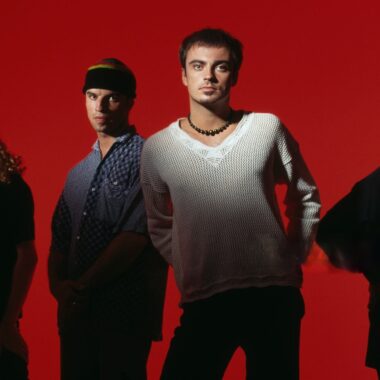
Catherine Wheel, formed in Great Yarmouth in 1990, are one of the often-overlooked but deeply influential bands to emerge from the shoegaze movement. Fronted by Rob Dickinson, the group combined the swirling guitar atmospheres associated with the genre with a muscular, almost hard-rock energy that set them apart from many of their peers. While bands like Slowdive and My Bloody Valentine leaned heavily into dreamlike haze, Catherine Wheel injected a sharp edge that made their sound both immersive and direct.
Their debut album Ferment remains a cornerstone of their discography. Tracks such as “Black Metallic” captured the sweeping textures of shoegaze but anchored them in a structure that felt expansive and anthemic. Dickinson’s soaring vocals gave the music an emotional clarity, cutting through the dense layers of guitar. This blend of intensity and atmosphere positioned Catherine Wheel as a band capable of speaking to both shoegaze devotees and fans of more traditional rock.
With later albums such as Chrome and Happy Days, the band pushed further into heavier territory, at times flirting with alternative and even grunge sensibilities. Yet even as their sound evolved, they maintained the textural richness that connected them to shoegaze. Their music always carried a sense of weight and presence, as though the guitars were less about background wash and more about overwhelming force. This balance made them a band difficult to categorise, but also one that quietly broadened the possibilities of what shoegaze could be.
Although Catherine Wheel never reached the mainstream recognition of some of their contemporaries, their influence has echoed across decades. For musicians looking to bridge melody and power, they provided a template that showed how atmosphere and intensity could exist side by side. They proved that shoegaze did not have to be fragile or elusive. It could also be commanding, full-bodied, and even aggressive without losing its dreamlike qualities.
This legacy has not been lost on modern acts. Bands such as Wornsteps have cited Catherine Wheel as an influence, particularly in their ability to combine immersive textures with a harder emotional punch. For newer generations of shoegaze-inspired artists, Catherine Wheel’s approach demonstrates how to craft music that envelops the listener while still driving forward with force and urgency. Their music serves as a reminder that shoegaze is not a single template but a spectrum, and within it lies room for both delicacy and fire.
Looking back, Catherine Wheel’s career offers a fascinating perspective on the evolution of guitar music in the 1990s. They stood at a crossroads between shoegaze, alternative rock, and post-grunge, managing to weave elements of all three into something uniquely theirs. Though their name may not always appear in the first breath when shoegaze is discussed, their contribution remains vital.
In the end, Catherine Wheel carved out a space where noise and clarity, power and atmosphere could coexist. Their work continues to resonate, not only as a document of a particular moment in British music but as a guidepost for artists exploring the endless interplay between beauty and intensity.